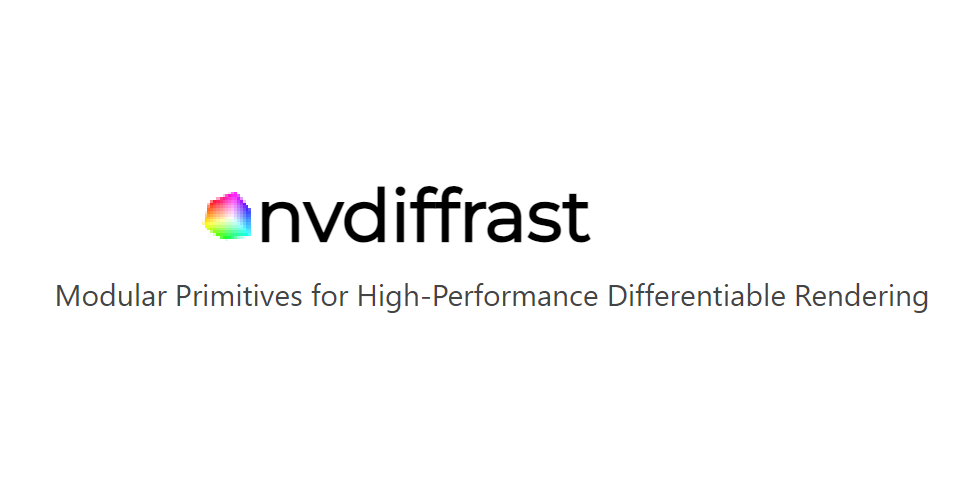NSDT工具推荐: Three.js AI纹理开发包 - YOLO合成数据生成器 - GLTF/GLB在线编辑 - 3D模型格式在线转换 - 可编程3D场景编辑器 - REVIT导出3D模型插件 - 3D模型语义搜索引擎 - AI模型在线查看 - Three.js虚拟轴心开发包 - 3D模型在线减面 - STL模型在线切割 - 3D道路快速建模
你是否发现模型太大,无法部署在你想要的云服务上?或者你是否发现 TensorFlow 和 PyTorch 等框架对于你的云服务来说太臃肿了?ONNX Runtime 可能是你的救星。
如果你的模型在 PyTorch 中,你可以轻松地在 Python 中将其转换为 ONNX,然后根据需要量化模型(对于 TensorFlow 模型,你可以使用 tf2onnx)。ONNX Runtime 是轻量级的,量化可以减小模型大小。
让我们尝试将 PyTorch 中预训练的 ResNet-18 模型转换为 ONNX,然后量化。我们将使用 ImageNet 数据集的子集比较准确率。
0、先决条件
首先下载 ImageNet-100 验证数据集并将其解压到一个目录,从现在开始我们将该目录称为 {VAL}。 {VAL} 应如下所示。
{VAL}/
|--n01440764/
|--ILSVRC2012_val_00000293.JPEG
|--...
|--...
换句话说, {VAL}/{synset}/{image_name}.JPEG
接下来下载ImageNet的同义词集(synset)。
如果你想知道“同义词集”是什么,ImageNet 网站是这样描述的:
ImageNet 是根据 WordNet 层次结构组织的图像数据集。WordNet 中的每个有意义的概念(可能由多个单词或词组描述)称为“同义词集”或“同义词集”。
现在,下载此 synset_words.txt 文件,由 J.D. Salinger 的《麦田里的守望者》的狂热粉丝提供。你也应该阅读它。😃
1、软件包
我们需要安装和导入以下软件包。你可以使用 pip 来完成此操作。如果你有受支持的 GPU,可能能够使用为 GPU 构建的软件包版本。(例如 --onnxruntime-gpu)
from tqdm import tqdm
from PIL import Image
import glob
import numpy as np
import torch
import torchvision as tv
import onnx
import onnxruntime as ort
from onnxruntime import quantizationTQDM 仅用于美观的进度条。 😄
2、PyTorch环节
对于输入图像,模型输出一个向量,其中包含 1000 个元素,每个元素代表一个同义词集。因此,我们需要使用 synset_words.txt 将数据集中的同义词集与索引中的模型输出向量进行匹配。
synset_to_target = {}
f = open("synset_words.txt", "r")
index = 0
for line in f:
parts = line.split(" ")
synset_to_target[parts[0]] = index
index = index + 1
f.close()2.1 数据加载器
创建一个可在 DataLoader 中使用的 dataset 类:
preprocess = tv.transforms.Compose([
tv.transforms.Resize(256),
tv.transforms.CenterCrop(224),
tv.transforms.ToTensor(),
tv.transforms.Normalize(mean=[0.485, 0.456, 0.406], std=[0.229, 0.224, 0.225]),
])
def tar_transform(synset):
return synset_to_target[synset]
class ImageNetValDataset(torch.utils.data.Dataset):
def __init__(self, img_dir, transform=None, target_transform=None):
self.img_dir = img_dir
self.img_paths = sorted(glob.glob(img_dir + "*/*.JPEG"), key=lambda x: int(x.split("_")[-1].split(".")[0]))
self.transform = transform
self.target_transform = target_transform
def __len__(self):
return len(self.img_paths)
def __getitem__(self, idx):
img_path = self.img_paths[idx]
image = Image.open(img_path)
synset = img_path.split("/")[-2]
label = synset
if self.transform:
image = self.transform(image)
if self.target_transform:
label = self.target_transform(label)
return image, label
ds = ImageNetValDataset("{VAL}/", transform=preprocess, target_transform=tar_transform)如果需要,拆分或切片数据集,并保留数据集的未触及部分进行量化。
offset = 500
calib_ds = torch.utils.data.Subset(ds, list(range(offset)))
val_ds = torch.utils.data.Subset(ds, list(range(offset, offset * 2)))calib_ds 保留用于量化。
创建具有所需批量大小的 DataLoader。
batch_size = 64
dl = torch.utils.data.DataLoader(val_ds, batch_size=batch_size, shuffle=False)可以关闭 shuffle,因为按图像名称排序会按预定顺序混合图像。
2.2 PyTorch 模型
从 Torch Hub 下载 ResNet-18。
model_pt = torch.hub.load('pytorch/vision:v0.10.0', 'resnet18', weights=tv.models.ResNet18_Weights.DEFAULT)
model_pt.eval()eval() 将模型设置为推理模式。
使用虚拟输入执行一次推理:
dummy_in = torch.randn(1, 3, 224, 224, requires_grad=True)
dummy_out = model_pt(dummy_in)2.3 转换为 ONNX
ONNX 模型将保存到给定的路径:
# export fp32 model to onnx
model_fp32_path = 'resnet18_fp32.onnx'
torch.onnx.export(model_pt, # model
dummy_in, # model input
model_fp32_path, # path
export_params=True, # store the trained parameter weights inside the model file
opset_version=14, # the ONNX version to export the model to
do_constant_folding=True, # constant folding for optimization
input_names = ['input'], # input names
output_names = ['output'], # output names
dynamic_axes={'input' : {0 : 'batch_size'}, # variable length axes
'output' : {0 : 'batch_size'}})常量折叠(constant folding)将用预先计算的常量节点替换一些具有所有常量输入的 op。
验证模型的结构并确认模型具有有效的架构。通过检查模型的版本、图形的结构以及节点及其输入和输出来验证 ONNX 图的有效性。
model_onnx = onnx.load(model_fp32_path)
onnx.checker.check_model(model_onnx)如果测试失败,则会引发异常。
2.4 PyTorch vs. ONNX
定义一个将PyTorch张量转换为NumPy数组的函数:
def to_numpy(tensor):
return tensor.detach().cpu().numpy() if tensor.requires_grad else tensor.cpu().numpy()此函数将允许我们将相同的 PyTorch DataLoader 与 ONNX 一起使用。
准备模型:
ort_provider = ['CPUExecutionProvider']
if torch.cuda.is_available():
model_pt.to('cuda')
ort_provider = ['CUDAExecutionProvider']
ort_sess = ort.InferenceSession(model_fp32_path, providers=ort_provider)使用 GPU(如果可用)。
测试模型:
correct_pt = 0
correct_onnx = 0
tot_abs_error = 0
for img_batch, label_batch in tqdm(dl, ascii=True, unit="batches"):
ort_inputs = {ort_sess.get_inputs()[0].name: to_numpy(img_batch)}
ort_outs = ort_sess.run(None, ort_inputs)[0]
ort_preds = np.argmax(ort_outs, axis=1)
correct_onnx += np.sum(np.equal(ort_preds, to_numpy(label_batch)))
if torch.cuda.is_available():
img_batch = img_batch.to('cuda')
label_batch = label_batch.to('cuda')
with torch.no_grad():
pt_outs = model_pt(img_batch)
pt_preds = torch.argmax(pt_outs, dim=1)
correct_pt += torch.sum(pt_preds == label_batch)
tot_abs_error += np.sum(np.abs(to_numpy(pt_outs) - ort_outs))
print("\n")
print(f"pt top-1 acc = {100.0 * correct_pt/len(val_ds)} with {correct_pt} correct samples")
print(f"onnx top-1 acc = {100.0 * correct_onnx/len(val_ds)} with {correct_onnx} correct samples")
mae = tot_abs_error/(1000*len(val_ds))
print(f"mean abs error = {mae} with total abs error {tot_abs_error}")你可能会得到一些这样的结果:
# CPU
# pt top-1 acc = 79.0 with 395 correct samples
# onnx top-1 acc = 79.0 with 395 correct samples
# mean abs error = 1.7788757681846619e-06 with total abs error 0.8894378840923309
# GPU
# pt top-1 acc = 79.0 with 395 correct samples
# onnx top-1 acc = 79.0 with 395 correct samples
# mean abs error = 4.85603129863739e-06 with total abs error 2.428015649318695已知 CPU 和 GPU 产生的结果略有不同,具体取决于操作的实现方式和轻微的位错误。
4、ONNX模型量化
根据 ONNX 运行时文档,建议在量化之前执行此预处理步骤,其中包括优化。
model_prep_path = 'resnet18_prep.onnx'
quantization.shape_inference.quant_pre_process(model_fp32_path, model_prep_path, skip_symbolic_shape=False)预处理后的模型将保存到给定的路径。
4.1 校准数据读取器
根据 ONNX 运行时文档,
通常,建议对 RNN 和基于 transformer 的模型使用动态量化,对 CNN 模型使用静态量化。
由于 ResNet-18 主要是 CNN,我们应该进行静态量化。但是,它需要一个数据集来校准量化的模型参数。(幸好我们把 alib_ds留下了! 😉
class QuntizationDataReader(quantization.CalibrationDataReader):
def __init__(self, torch_ds, batch_size, input_name):
self.torch_dl = torch.utils.data.DataLoader(torch_ds, batch_size=batch_size, shuffle=False)
self.input_name = input_name
self.datasize = len(self.torch_dl)
self.enum_data = iter(self.torch_dl)
def to_numpy(self, pt_tensor):
return pt_tensor.detach().cpu().numpy() if pt_tensor.requires_grad else pt_tensor.cpu().numpy()
def get_next(self):
batch = next(self.enum_data, None)
if batch is not None:
return {self.input_name: self.to_numpy(batch[0])}
else:
return None
def rewind(self):
self.enum_data = iter(self.torch_dl)
qdr = QuntizationDataReader(calib_ds, batch_size=64, input_name=ort_sess.get_inputs()[0].name)量化模型将保存到给定的路径:
q_static_opts = {"ActivationSymmetric":False,
"WeightSymmetric":True}
if torch.cuda.is_available():
q_static_opts = {"ActivationSymmetric":True,
"WeightSymmetric":True}
model_int8_path = 'resnet18_int8.onnx'
quantized_model = quantization.quantize_static(model_input=model_prep_path,
model_output=model_int8_path,
calibration_data_reader=qdr,
extra_options=q_static_opts)
根据 ONNX 运行时存储库,
如果模型以 GPU/TRT 为目标,则需要对称激活和权重。如果模型面向 CPU,建议使用非对称激活和对称权重,以平衡性能和准确性。
你可以从这个ResearchGate 页面了解有关对称/非对称量化的更多信息。
4.2 ONNX FP32 vs. INT8
加载 量化的onnx 模型:
ort_int8_sess = ort.InferenceSession(model_int8_path, providers=ort_provider)测试模型:
correct_int8 = 0
correct_onnx = 0
tot_abs_error = 0
for img_batch, label_batch in tqdm(dl, ascii=True, unit="batches"):
ort_inputs = {ort_sess.get_inputs()[0].name: to_numpy(img_batch)}
ort_outs = ort_sess.run(None, ort_inputs)[0]
ort_preds = np.argmax(ort_outs, axis=1)
correct_onnx += np.sum(np.equal(ort_preds, to_numpy(label_batch)))
ort_int8_outs = ort_int8_sess.run(None, ort_inputs)[0]
ort_int8_preds = np.argmax(ort_int8_outs, axis=1)
correct_int8 += np.sum(np.equal(ort_int8_preds, to_numpy(label_batch)))
tot_abs_error += np.sum(np.abs(ort_int8_outs - ort_outs))
print("\n")
print(f"onnx top-1 acc = {100.0 * correct_onnx/len(val_ds)} with {correct_onnx} correct samples")
print(f"onnx int8 top-1 acc = {100.0 * correct_int8/len(val_ds)} with {correct_int8} correct samples")
mae = tot_abs_error/(1000*len(val_ds))
print(f"mean abs error = {mae} with total abs error {tot_abs_error}")可能得到类似如下的结果:
# CPU
# onnx top-1 acc = 79.0 with 395 correct samples
# onnx int8 top-1 acc = 77.8 with 389 correct samples
# mean abs error = 0.265933556640625 with total abs error 132966.7783203125
# GPU
# onnx top-1 acc = 79.0 with 395 correct samples
# onnx int8 top-1 acc = 77.4 with 387 correct samples
# mean abs error = 0.44179485546875 with total abs error 220897.427734375CPU 与 GPU 的结果也可能不同,因为选择了对称与非对称量化方法。
原文链接:PyTorch to Quantized ONNX Model
BimAnt翻译整理,转载请标明出处





